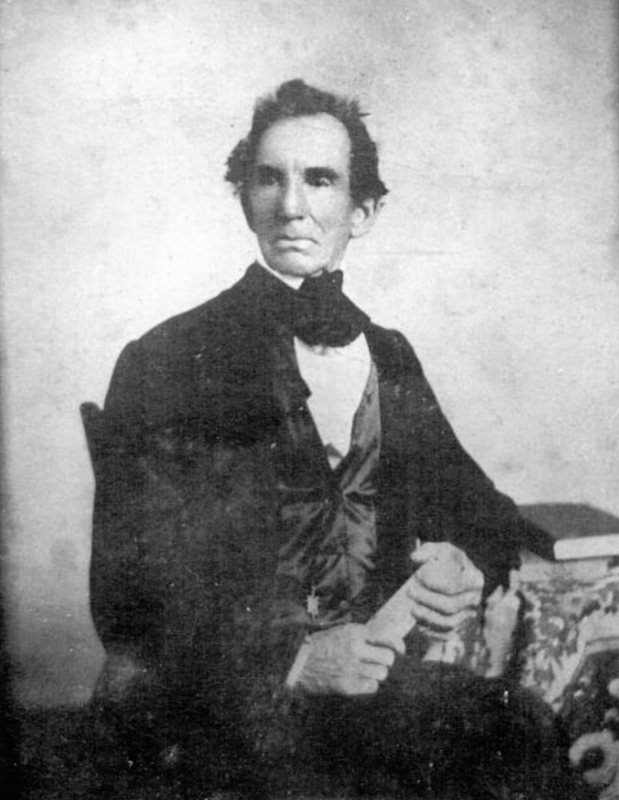Rufus W. Bailey

Rufus William Bailey, a minister and educator from New England, played a critical role in preserving the first college established in Huntsville and also was responsible for building the house where Sam Houston died.
Bailey was born in North Yarmouth, Maine, on April 13, 1793, and attended Dartmouth College where he earned his A.B. in 1813 and his Masters three years later. He studied law under Daniel Webster but then entered Andover Theological Seminary for divinity studies. He served as a minister in Congregational churches in Vermont, Massachusetts and Connecticut and also lived for several years in South Carolina.
While in South Carolina, he became "intimately acquainted with the state of slavery." He wrote to a northern abolitionist society in 1835 to ask that the organization not send him any publications. He added, "So far as I know, not a single Northern man here sympathises in the least with your sentiments." Further, he later wrote that the efforts of northern abolitionists were unrealistic and that blacks should be returned to Africa through the work of the American Colonization Society (ASC).
Bailey moved to Staunton, Virginia in 1842 where he established the Augusta Female Seminary, which later became Mary Baldwin College. Concerned with the presence of free blacks in and around Staunton, Bailey became involved with ACS efforts there to relocate African Americans to Liberia. He initially served as the ACS agent in Staunton while also running the seminary, but resigned from the school in 1849. By 1850, Bailey's ACS work extended throughout the Shenandoah Valley, but he suffered financial hardships due to a lack of support from ACS and he resigned in 1852.
Bailey and his family moved to Huntsville in 1854, when he became of a professor of languages at Austin College, established just four years earlier on the site where Sam Houston State University sits today. Bailey purchased a five-acre lot where he built a home that, because of its turrets and other unusual architectural features, became known as the Steamboat House.
Bailey became president of Austin College in 1858 and like the college's previous presidents, Bailey also served as minister of the First Presbyterian Church. The presidency came with challenges as the school struggled to stay open due to financial problems. According to the photo history book "Austin College," Bailey paid some creditors with his own money to keep the school solvent and later raised enough money to "retire the college's debt." Bailey continued as president until 1862 and although the Civil War limited instruction, Austin College was the only college in Texas to operate under its original charter after the war ended. The authors of "Austin College" note that this "accomplishment was in large part due to the leadership of Rufus Bailey."
Bailey did not live to see the later success of Austin College or even the end of the war; he died in Huntsville on April 25, 1863. Sam Houston died three months later in the Steamboat House, the home he had rented from Bailey.
Images





